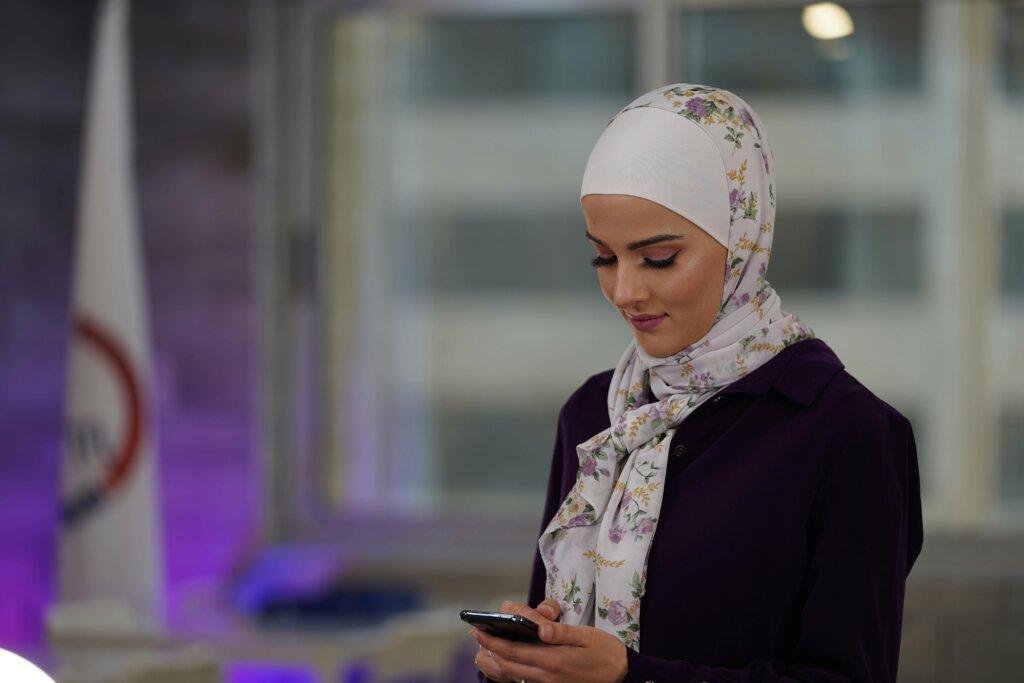Hijabhoojup is the word that strikes a significant chord in the Muslim fraternity, especially among women who embrace the Hijab. As an emblem, the word defines the multifaceted Hijab, which means it is not just about wearing a piece of fabric but more about faith and personal choice.
For a large section of Muslim females, hijabhoojup reflects modesty along with being a part of the rich cultural and religious heritage. In recent years, the term has gained prominence in discussions about the Hijab, as such discussions evolved to reflect a diverse spectrum of experiences and interpretations around this practice.
This blog aims to trace the meaning of hijabhoojup, understand its significance to Muslim women, and bring out multiple perspectives. We will examine why women wear the Hijab, the challenges encountered, and the empowerment the choice brings.
What Is Hijabhoojup?
Hijabhoojup has concerned the practice and philosophy that encircles the Hijab to make it a concern relating to women’s personal and spiritual journeys in adopting it. It is an emblem of modesty, dignity, and respect, and it allows women to say that they are bringing forward their faith against this fast-paced society. On this note, many saw that hijabhoojup is more than having your body covered but becoming a part of oneself besides expressing self-emergence and self-expression toward autonomy.
Importance of Hijabhoojup
Cultural Identity: For many Muslim women, it is a crucial way to relate to their culture. It reminds them of their origins and the culture and values passed down to the next generation. This garment can bestow on its wearer the feeling of belonging to this community, creating solidarity as women identify with the religion.
Religious commitment: The Hijab often wears the cloak of a religious obligation because it lies in Islamic teachings and is usually viewed as wearing it as a statement of faith. It follows a principle of modesty to make way as outlined in the Quran and can strengthen the spiritual connectivity and sense of purpose it gives.
Empowerment and Autonomy: To dispel some misconceptions, hijabhoojup may empower women. The act of putting on the Hijab shows how women take control and make their choices, rejecting what has traditionally objectified them in the face of society. Thus, the individual can construct her identity without societal forces impinging on her life.
Personal Expression: Hijab allows women to express themselves through various styles and colours. Women can choose fabrics, patterns, and ways of styling their Hijab that reflect their personality, taste, and attitude. This aspect of Hijabhoojup implies that every woman is distinct and modest and can be chic and diverse.
Navigating Challenges: While hijab is empowering, it is not without challenges. Women in many such societies where the Hijab is misunderstood or discriminated against face much of the challenge as they strive to maintain high self-esteem and strength during such instances.
Common Misconceptions About Hijabhoojup
Hijab, although significant, is associated with many myths. Here is a common misconception about this phenomenon.
Myth 1: Hijab is Compulsory: Though many women have opted for the Hijab because of religious obligations, the interpretation of the Islamic teachings varies. This means some women have decided not to wear it, and their decisions should be respected.
Myth 2: Hijab Oppresses Women: The majority of people view Hijab as a symbol of oppression. However, for most women, hijabhoojup is power to be exercised as well as an identity to be expressed.
Myth 3: All Hijabs are the same. That is far from the truth; styles and cultural expressions of the Hijab vary as much as women do in thought, culture, and uniqueness.
The Life of Hijabhoojup
Every woman will have her unique journey with the hijab. While some wear it when they are young, others put it on when maturity catches them. The process mainly involves self-introspection and consulting with family members and close friends, thus attaining deep knowledge about one’s beliefs.
Initial Decision: At times, the decision to wear a hijab is based on what one learns from one’s family background, religious teachings, and personal experiences. This type of decision usually calls for a lot of excitement and purpose.
Adapting to Change: As women get used to hijab, they should face social changes and attitudes towards themselves. This adaptability could be challenging yet fulfilling as they cope with this new identity.
Building Community: Community is a source of strength for many women. Networking with other hijab women creates an opportunity to strengthen one another, share the same experience, and help one develop a sense of belonging.
Continued Contemplation: The story of hijab is not yet complete. Women can continually think about their reasons for donning the Hijab and how it fits into their changing identities. This reflection will then lead to a more profound appreciation of their choice.
Role of Family and Community in Hijabhoojup
Family and community are crucial in shaping a woman’s experience with hijab. Support from family members can significantly influence a woman’s decision to wear the Hijab and her comfort level.
Family Influence: Most women are motivated by their mothers, sisters, or other female relatives to put on the Hijab. Such a family relationship helps them understand what the hijabhoojup means and how it should play a role in their lives.
Community Support: Community support in the company of like-minded people may enhance the hijab experience. Many women find support in groups where they can share their experiences, problems, and triumphs related to wearing a hijab. This type of community support may also give them strength and empowerment.
Cultural Celebrations: In many cultures, the Hijab is celebrated during significant life events, such as weddings or religious ceremonies. These celebrations can reinforce the importance of hijab and create a sense of pride among women who wear it.
The Influence of Social Media on Hijabhoojup
Today, social media has a very significant influence on creating opinions on hijab. People post their journeys regarding Hijab, dressing sense, and personal life on Instagram, TikTok, and YouTube.
Social media has made hijabhoojup more visible; women can wear them and share their experiences and styles. This way, the representation can demystify the stereotypes by showing a more nuanced interpretation of the meanings of wearing a hijab.
Fashion and Trends: Most women use social media to check on fashion trends regarding hijabhoojup. Influencers and bloggers post styling tips which prove that modesty can be fashionable and diverse. This aspect of hijabhoojup encourages creativity and self-expression.
Support Networks: Online communities support women as they navigate their hijab journeys. Such networks enable them to share experiences, give advice, and motivate each other, thus creating a feeling of belonging among women who wear the Hijab.
Hijabhoojup Challenges Faced by Women
Even though hijab can empower women, they face various challenges when wearing it. These may vary with cultural, social, and political settings.
Discrimination and Prejudices: Most women are discriminated against or prejudiced against, mainly because they wear a Hijab. It can even take the form of utterances, social exclusion in certain circles, or, in some cases, workplace discrimination. Sometimes, it becomes discouraging and makes them feel segregated.
Misunderstanding and Stereotypes: Misunderstandings about hijabhoojup may lead to misunderstandings. Some people take the Hijab as something oppressive rather than a choice. Lack of understanding creates barriers in social interactions and contributes to negative stereotypes.
Pressure to Conform: In Muslim society, women are sometimes subjected to pressure to conform to specific standards of hijabhoojup. This is occasioned by family, friends, or cultural expectations to make those who choose to wear the Hijab stand out or not at all feel inadequate or guilty.
The Future of Hijabhoojup
As society develops, so does the definition of hijab. People who discuss issues of identity, autonomy, and cultural expression will probably discuss the practice’s future.
Awareness: As people engage more in talking about hijab, there may come a time when more and more people are made aware and educated about the meaning and significance of the Hijab, thus eliminating the myths associated with it and fostering more acceptance.
Different kinds of expressions of modesty probably characterized the hijabhoojup’s future. At this point, women kept on experimenting with what other colour, style, or form was supposed to be worn by a hijab.
Empowerment through Advocacy: Whether hijab or the rights of women to wear the Hijab can make a difference in combating discrimination and promoting understanding will, to a great extent, shape the future of hijabhoojup. That kind of effort can empower women to be confident in their choices.
Conclusion: Hijabhoojup
It is, thus, a multidimensional concept regarding personal, cultural, and spiritual aspects of hijab-wearing. The nature of this journey can be one of self-discovery, tied to issues of empowerment and relating to faith and community.
It will be essential to gain such an understanding of hijab for further insight into the multiplicity of Muslim women’s experiences and what makes these choices meaningful. The sense of hijabhoojup, irrespective of whether or not one wears a hijab, therefore lies in respect for individual autonomy rights and identity affirmation.
FAQs: Hijabhoojup
What Is The Meaning Of Hijabhoojup?
Hijabhoojup refers to the practice and philosophy concerning the Hijab; it emphasizes personal choice, cultural identity, and religious commitment among Muslim women.
Is Wearing The Hijab Compulsory In Islam?
It is an interpretation of different scholars and communities. Many women wear the Hijab because it is a religious obligation, while others do not, which is correct.
How Can Hijabhoojup Empower Women?
Hijabhoojup empowers women to be independent, challenge societal norms, and express their identity on their terms.
What Are Some Common Misconceptions About Hijab?
Other myths include that the Hijab should be worn, that it shackles women, and that most hijabs are alike. Every woman’s decision has been different.
How Should Women Encourage Each Other To Wear Hijab?
Women can support one another by sharing experiences, helping each other to get boosted, and creating an identity that appreciates different decisions regarding wearing or not wearing a hijab.







